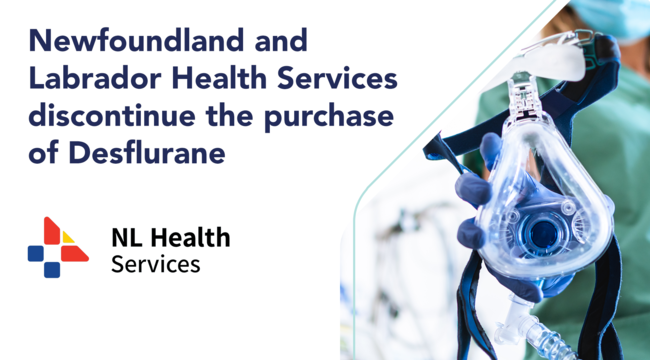HealthPRO Canada News
Anything is possible: The Southlake Regional Health Centre Innovative Procurement Experience
Southlake was looking for a procurement solution that took the entire continuum of care into account. They took a chance on Innovative Procurement and discovered that it takes time and energy but provides a real return on value.

“If you’re prepared to make the investment and go the distance, the results of Innovative Procurement are definitely worth it.” – the Southlake Regional Health Centre Team speaking at NHLC 2019: Janice Allen, Rob Bull, Helena Hutton and HealthPRO’s Cynthia Valaitis.
When it came time to renew their cardiac contracts, Southlake Regional Health Centre (SRHC) clinicians were saying, let’s find a better way. With this project, they realized they had an opportunity to approach procurement with a different mindset, one that could provide value across the continuum of care and not just one part of the system.
“We really were the first out of the gate with this approach, since many vendors don’t yet understand it and we were at the beginning of the learning curve ourselves,” says Rob Bull, VP, Finance, Technology and Innovation, CFO & Chief Information Officer for the hospital.
HealthPRO invited the Southlake team to share their story with delegates at this year’s National Health Leadership Conference (NHLC). Joining Rob on the panel were colleagues Helena Hutton, EVP and COO, Clinical Program and Regional VP, Central Cancer Program, and Janice Allen, Director of the Regional Cardiac Program.
The beginning of Southlake’s journey into Innovative Procurement (IP) begins with definitions. While IP is the purchase of unique solutions, Value-Based Procurement involves making investment decisions based on the overall value to the organization, rather than focusing narrowly on costs of a specific product or service. “They are separate things, but VBP can be incorporated into an organization’s innovative procurement strategy,” said Helena.
Which is exactly what happened at SRHC as they neared the end of their cardiac contracts and started a two-stage competitive dialogue approach with vendors. “We knew innovative procurement was a feasible option for the cardiac project because it was a big, complex project without a single, best solution,” said Helena.
The best experience for patients
A good economic outcome was important, but they were looking for creative solutions that would be good for patients. “We were approaching this from a value perspective,” said Janice. “We told vendors we wanted improved clinical outcomes and patients to have the best experience.”
They developed Quality Performance Indicators (QPI) using Cardiac Care Network reporting targets and the International Consortium for Health Outcomes Measurement (iCHOM) Global Standards. They settled on four main QPI Indicators and set ambitious goals:
- Reduce the readmission rate for Congestive Heart Failure patients from 21.4% to 14%;
- Reduce the average length of stay for Congestive Heart Failure patients from 6.6 days to 5;
- Reduce the average wait time for access to a heart function clinic for Congestive Heart Failure patients from 21 days to 7;
- Heart Rhythm ICD Upgrade to BiV was 5%; the target was 0%
A new experience for everyone
The core team was prepared for a few things to change, but were still surprised at the amount of time and resources they had to invest in the program. “As one or two meetings stretched to three and four, the initial enthusiasm started to wane,” said Janice. But before long, our physicians were engrossed in conversations that stretched into the night. “They had a lot of skin in the game and wanted to be part of it.”
This was a new experience for vendors as well, who were used to signing the contract and never being seen again. With IP, they were contractually obligated to stay involved in the process. What unfolded was a continuous conversation as the vendors and the hospital modified and tweaked each solution. “We went from a punitive environment where the vendors had to stand behind their guarantee to more of a shared accountability for driving success,” says Rob.
Yes, it took longer than they thought, but as the metrics started rolling in, they knew they’d made the right move. The QPIs for Year 1 were right on target:
- 9% improvement for Congestive Heart Failure (CHF) readmissions
- 2% improvement in CHF length of stay
- Target achieved of 7 days wait time for access to a heart function clinic
- Achieved target of no upgrades
There were other impressive results that – they were able to develop a heart failure patient pathway; CHF Lean savings of $162K; and increased use of the Cath Lab and Cardiac Short Stay unit.
The innovative procurement experience delivered more than good patient outcomes. As Janice explained, taking an innovative, value-based approach paid off in human, meaningful and long-term ways. “We saw clinician engagement across service lines and more teamwork and trust between the subspecialties,” she says. It also created a forum for creativity as the vendor and the hospital went back and forth with modifications.
“At Southlake, we have a history of engaging in research and innovation,” Janice concluded. “Innovative Procurement gave us another opportunity to do that.”
A few rules of the road
As they closed the session, the Southlake team shared their advice for anyone thinking about adopting an innovative procurement strategy:
- Build fluidity into the process and consider staff time and resources. “This is not for the faint of heart,” says Rob. IP requires a huge investment of time and resources.
- IP won’t always be the best fit to meet your procurement objectives. Sometimes you can incorporate specific elements of an IP approach, such as outcome-based objectives, without needing to go through the full IP methodology.
- Living with ambiguity. Each situation is unique and requires some tailoring. You can’t predict what it will look like, but the Southlake team had to have faith that that the creative solutions would emerge.
- Innovative Procurement is appropriate when a single, best solution is not known or available – an ideal approach, Rob said, for Ontario Health Teams who are focused on outcomes without clear solutions.
- Collaboration from all key stakeholders is essential from Day 1.
If you are prepared to make the investment and go the distance, the results are worth it. “We’re glad this only comes around every five years,” said Helena, “but when it does, we’ve learned that anything is possible!”


